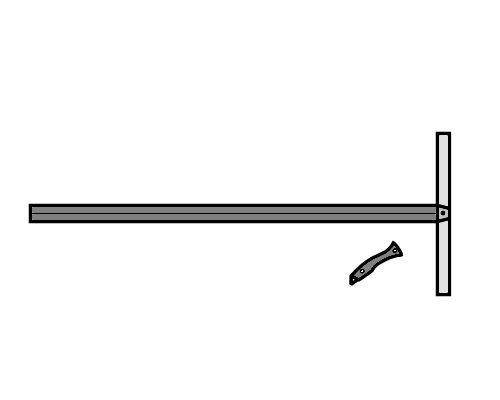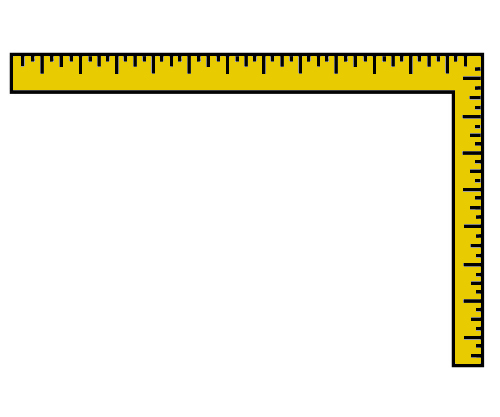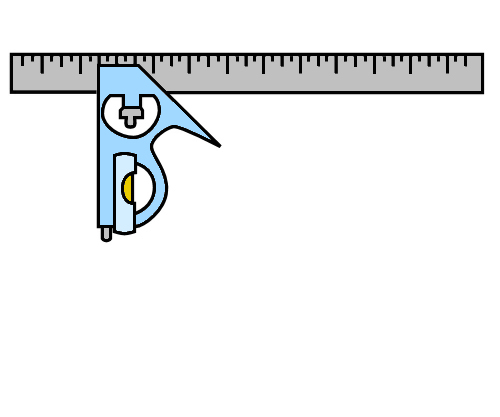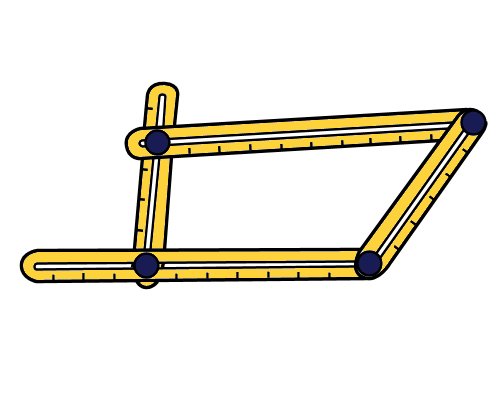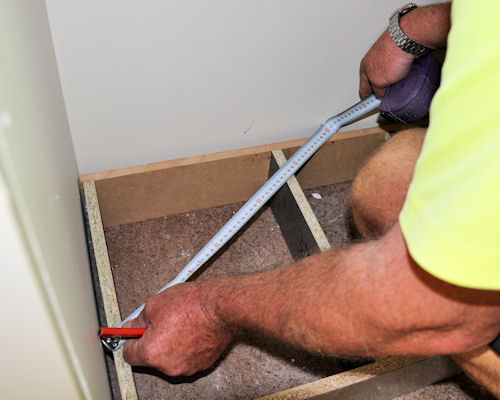Angles
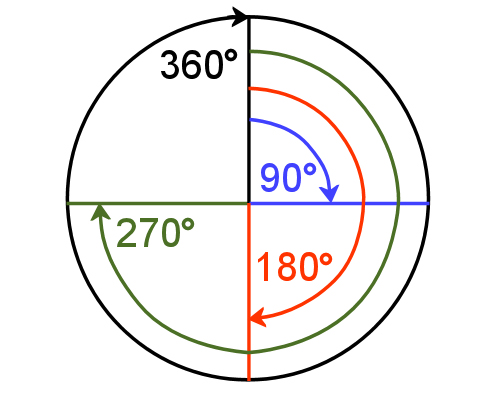 Audio for slide 2 (mp3 |6|KB)
Audio for slide 2 (mp3 |6|KB)
This is a reference to the amount of turn between the 2 lines.
That is, if you had a circle and drew a radius from the middle to the top, and then rotated it one quarter of a turn, you would have turned the radius through 90°.
One full turn around a circle is 360°.
This means that every angle formed between the two lines will be something less than that - for example, one quarter is 90°, half is 180°, three quarters is 270°.

 Audio for slide 7 (mp3 |6|KB)
Audio for slide 7 (mp3 |6|KB)
Using a level
Level means perfectly horizontal. A spirit level allows you to check that a surface or line is horizontal. It works on the principle that the bubble will find the highest point in a glass tube, because it is lighter than the surrounding fluid.
Since the tube is curved slightly with the highest point in the middle, the bubble floats exactly in the middle when the level is horizontal.

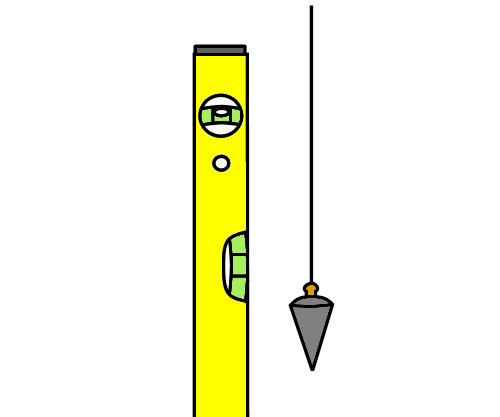 Audio for slide 8 (mp3 |6|KB)
Audio for slide 8 (mp3 |6|KB)
'Plumb' means perfectly vertical, and comes from a Latin word meaning 'lead'.
This is a reference to the plumb bob, which traditionally was always made of lead.
When a plumb bob is hung from a string, gravity draws the weight downwards, and the string forms a vertical line.

 Audio for slide 9 (mp3 |6|KB)
Audio for slide 9 (mp3 |6|KB)
Measuring diagonals
One way of checking to see whether a square or rectangular shape has right angled corners is to measure the diagonals.
This principle works because the opposite sides of a square or rectangle are always parallel - that is, the same distance apart at both ends. Therefore, if the corners are at 90°, or 'square', the two diagonals will be the same length.

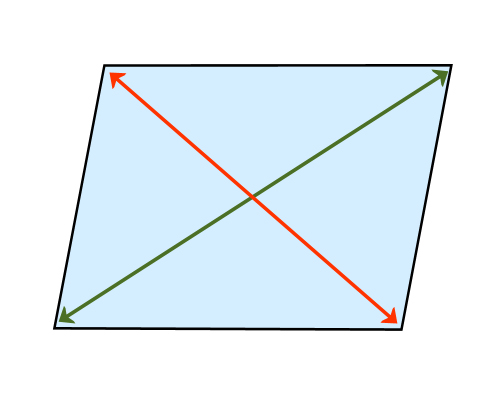 Audio for slide 10 (mp3 |6|KB)
Audio for slide 10 (mp3 |6|KB)
It's worth keeping this in mind as a reminder that you can't simply measure the lengths of the sides to check that an item is square - this won't tell you whether the corners are at right angles.

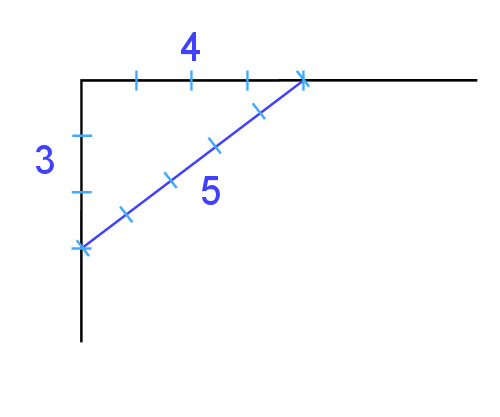 Audio for slide 12 (mp3 |6|KB)
Audio for slide 12 (mp3 |6|KB)
The 3, 4, 5 rule states that if you measure 3 units along one wall and mark the point, and 4 units along the other wall and mark the point, the distance between the two points should be 5 units if the corner is square.
It doesn't matter what length a 'unit' is, as long as the proportions are 3, 4 and 5.
That is, your lengths could be 3 metres, 4 metres, 5 metres; or 3 feet, 4 feet, 5 feet; or 6, 8, 10 or any other multiple of 3, 4, 5.


Learning activity
Audio 13 (mp3 |6|KB)The drawing below shows one corner of a room. The floor layer measures 1500 mm from the corner along one wall and marks the point. Then he marks 2000 mm from the corner along the other wall.
What length will the diagonal line be if the corner is square?
Enter your answer into the cell, and click on the 'Check your answer' button to see if you were right.

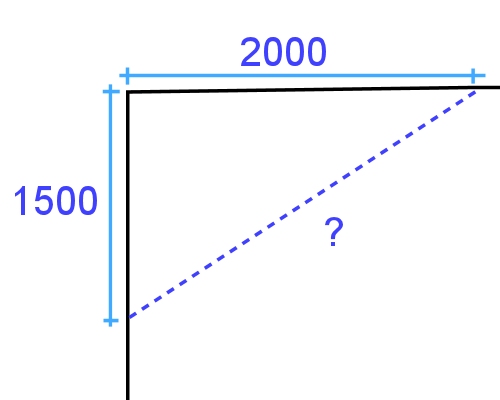 | 2500 | mm |
 Go to Volume
Go to Volume
